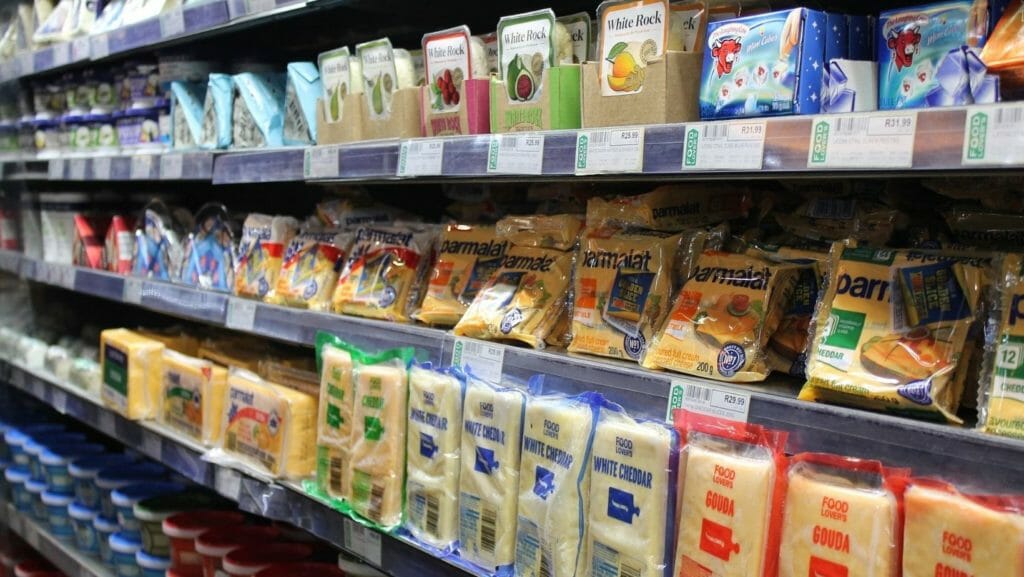The food industry is a massive, complex, and ever-changing system that provides the world with sustenance. To ensure the safety of the food supply, rigorous safety measures must be in place at all stages of production. One area that requires particular attention is ensuring no metallic contaminants in your products. In this article, we will explore how you can ensure that your products are free from metallic contaminants.

There are several potential sources of metallic contamination in the food industry. Some of the most common include:
- Metal fragments from processing equipment
- Metal shavings from packaging materials
- Foreign objects such as nails or screws
Human activity has led to an increase in metals in the environment. As a result, food products are now more likely to be contaminated with metals. To protect consumers, food manufacturers must ensure that their products are free of metallic contaminants. There are several ways to ensure that your products are free of metallic contaminants. Some of the most important include:
Implementing a Comprehensive Metal Detection Program
The most effective way to ensure that your products are free of metallic contaminants is to implement a comprehensive metal detection program. Metal detectors can detect the presence of metal fragments in food products. By implementing a program such as troubleshooting metal detectors, you can ensure that any products that are contaminated with metal are identified and removed before they reach consumers. There are several ways to use metal detectors in the food industry. Some of the most common include:
- Placing metal detectors at critical points in the production process
- Inspecting all incoming raw materials for metal contamination
- Conducting regular audits of your metal detection program
To be effective, a metal detection program must be tailored to the specific needs of your business. It would help if you worked with a qualified supplier of metal detectors to ensure that you choose the right equipment for your needs.
Regularly Cleaning and Maintaining Processing Equipment
Another way to reduce the risk of metallic contamination is to regularly clean and maintain your processing equipment. This will help remove any metal fragments that may have become lodged in the kit. It is also essential to periodically inspect your equipment for wear and tear signs. If you notice any damage, you should repair or replace the equipment as soon as possible.
In addition to cleaning and maintaining your processing equipment, you should also consider using food-grade lubricants. Food-grade lubricants are designed specifically for use in the food industry. They are made from ingredients that are safe for human consumption and will not contaminate your products with metals. This will help to prevent metal fragments from becoming lodged in the equipment.
Regularly Inspecting Processing Equipment
Another way to reduce the risk of metallic contamination is regularly inspecting processing equipment. If metal fragments are present in processing equipment, they can contaminate food products. It is essential that you periodically inspect all of the equipment that comes into contact with food.
If you find metal fragments in processing equipment, you should take steps to remove them and clean the equipment. This will help prevent them from contaminating food products and putting consumers at risk. It would help if you also considered replacing any excessively worn or damaged equipment.

Training Employees in Good Manufacturing Practices
All employees who work in the food industry must be trained in good manufacturing practices. This will help ensure that they are aware of the risks associated with metallic contamination and know how to prevent it. Good manufacturing practices should be regularly evaluated and updated to reflect changes in the industry.
Your employees should be aware of the dangers of metallic contamination and the importance of preventing it. They should also know how to inspect equipment and raw materials for metal fragments properly. In addition to general employee training, you should also consider providing specific training for employees who work with processing equipment. These employees should be familiar with the proper procedures for inspecting and cleaning equipment. They should also know how to handle correctly and dispose of any contaminated materials.
Keeping Up to Date With Changes in Food Safety Regulations
The food safety landscape is constantly changing. As such, you must keep up to date with the latest changes in food safety regulations. This will help to ensure that your products meet the highest possible standards. There are several ways you can stay up to date with changes in food safety regulations. Some of the most effective include:
- Reading industry publications
- Attending food safety conferences
- Working with a qualified food safety consultant
By staying up to date with changes in food safety regulations, you can be sure that your products meet the highest possible standards. This will help to protect consumers and ensure that your business remains compliant.
Inspecting Packaging Materials
Another potential source of metallic contamination is packaging materials. If metal shavings are present in packaging materials, they can contaminate food products. It is essential to inspect all packaging materials before they are used.
If you find metal shavings in packaging materials, you should take steps to remove them and clean them materials. This will help prevent them from contaminating food products and putting consumers at risk. It would help if you also considered replacing any packaging materials that are excessively worn or damaged.
Improving Handling Procedures
Another way to reduce the risk of metallic contamination is to improve handling procedures. Your employees should be trained in proper handling procedures to minimize the risk of contamination.
In particular, you should focus on minimizing the amount of time that food products are exposed to potential sources of contamination. This includes raw materials, processing equipment, and packaging materials. By reducing exposure, you can help to prevent metal fragments from settling on food products and contaminating them.
Metallic contamination is a severe problem in the food industry. To protect consumers, food manufacturers must ensure that their products are free of metallic contaminants. Some of the most effective measures include implementing a metal detection program, regularly inspecting processing equipment, and improving employee training. By taking these steps, you can help to ensure that your products are safe for consumers and free of metallic contaminants.


